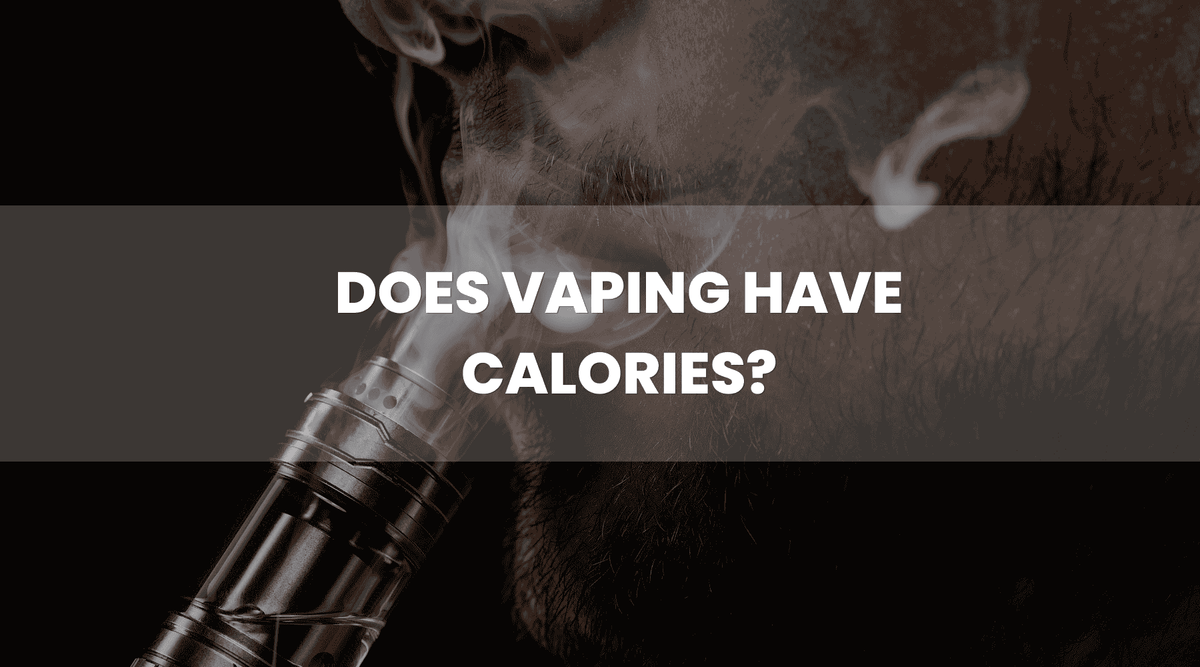
Does Vaping Have Calories?
|
Time to read 4 min
|
Time to read 4 min
Today, we are tackling one of Google’s most asked questions regarding using a vape device. Do vape juices cause calories? Let’s solve some mysteries!
Vaping is the gift that keeps on giving if you happen to be an ex-smoker. Not only is it up to 95% less harmful for you than cigarettes are, it also opens up your usual smoke to a world of vaping flavour experiences. From cherries and berries to fruits, desserts to your favourite soda pop flavour, you can indulge your sweet tooth by trying any sugar-filled flavour that you like – or can you?
Does aping actually cause weight gain? Do vape juices contain calories, sugars, or carbs? Vape Direct investigates below.
Vape juice contains flavourings, water, and a blend of Propylene Glycol and Vegetable Glycerine. These last two are abbreviated to VG and PG. Each vape juice bottle will have a PG:VG ratio. Starter e-liquids usually have a 50:50 ratio.
Vape juice passes into your body through your lungs, so your body does not digest vape juice in the same way that you might digest food in the stomach. Your body does ingest vape juice though, which is slightly different.
The reason that we smoked nicotine in the first place is because there are two quick ways to get any drug into your system. You can take it sublingually, under your tongue where the skin is thinnest, or you can take it by burning it and breathing in the smoke. The inhalation serves to speed up the passing of nicotine from your vape juice into your lungs due to the thin nature of the cell walls within the lungs. This thinness makes them vulnerable and is part of the reason why smoking is so bad for you.
If there are any nutrients, toxins, or chemicals in your vape juice, your body will ingest them this way. Fortunately, calories cannot be transferred through the lungs in this way.
Some vape juices do contain calories but the number of calories would be so negligible that it is entirely unlikely to make you gain weight. VG and PG are both derivatives of food grade compounds. Vegetable Glycerine is produced using vegetable oil, which has about 32 calories per gram. Once this has been distilled down, those calories become trace. PG has even less calories, at only 1 calorie per gram.
The flavourings used to make vape juice usually use sweeteners but there are those which use sugars.
If you are genuinely concerned that you are putting on weight via vaping, try switching to a lower VG, higher PG ratio vape juice. You can also try avoiding the sweetest flavours which may contain sugar.
International healthcare website Healthline maintains that while vape juice additives may contain calories, the nicotine itself does not. They do bring up an interesting fact about nicotine though. It is a known appetite suppressant. Vaping might actually have a similar effect on your body to cigarettes, wherein it makes you less hungry between meals.
Whether or not it is possible to inhale calories depends on the compound you are breathing in. In vape juice, the substance you are inhaling has been specifically designed to pass through the alveolar membranes and into the blood cells faster. However, you cannot ingest calories through the lungs. This means that while vape juice might contain a few, you are unlikely to pick them up.
The amount of calories per vape is negligible. Google AI estimates the number of calories per session to be one, while industry professionals estimate anything from 4 to 10 calories per one whole disposable vape. SKE, Elf Bar, and Lost Mary disposables are three top products on the market and each contain an estimated 8 calories each.
Other estimations indicate a good formula for working out how many calories are in your vape is to allow 5 calories per ml of vape juice. This would place any full tank of e-liquid at around 10 calories total. If you use 600 puffs on that tank over the course of a week, those ten calories become negligible amounts.
The conclusion can only be that there are so few calories per vaping session that it is highly unlikely that a vape device is contributing to your weight gain. Vaping causes only minimal calories to enter your system. Even though vape juice does contain small amounts of calories, you cannot transfer these into your bloodstream through your lungs. The only way those calories get into your body is by you swallowing the small amounts of e-liquid which coat your mouth after vaping.
In fact, evidence suggests that by acting as an appetite suppressant, vaping might actually work to prevent you from eating as much as you otherwise might. This could contribute to weight loss but is not considered a healthy alternative to a balanced diet and exercise.
As a leading provider of vape juices in England and Wales, Vape Direct are perfectly placed to answer the question of which sweet vape juices are best. We have a full range of candy and sweet flavoured vape juices, so here are our top recommendations off that list.
Now that you know you can vape freely without worrying about if vaping makes you gain weight, you can try any sweet e-liquid that you like. You can find more sweet vape juice flavours on the Vape Direct website.